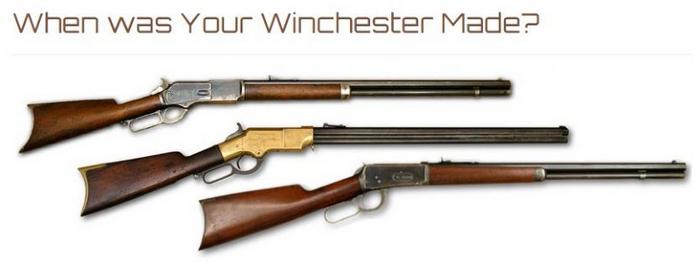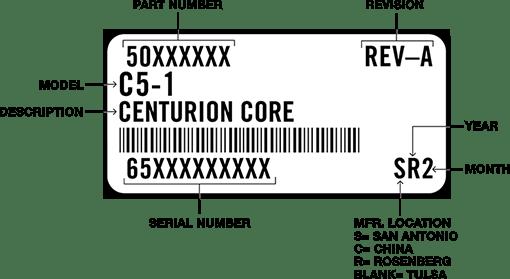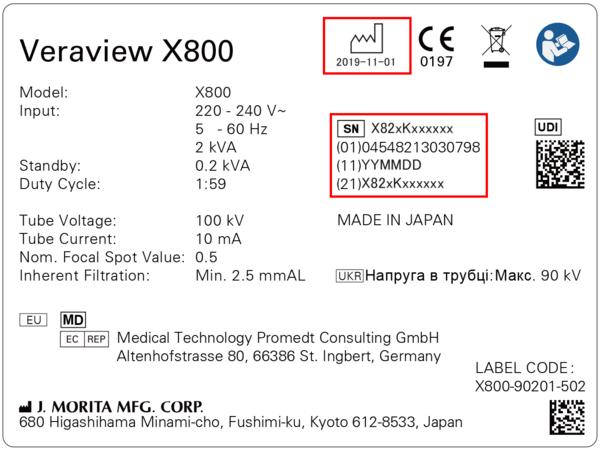Introduction to Winchester Model 94 and Serial Number Dating
Identifying the manufacturing year of a Winchester Model 94 is as simple as examining its serial number. As a seasoned collector, I’ve encountered countless firearms and have learned this essential technique for unlocking their historical value. Serial number dating provides crucial insights, enhancing not only your collection but also your appreciation of these iconic rifles. Having delved deep into the world of Winchester collectors and consulted experts, I have refined the process to help enthusiasts like myself accurately trace the production dates of these cherished firearms. I’ve personally handled numerous Model 94s, compared notes with fellow collectors, and compiled a wealth of knowledge that I’m eager to share. In this article, I’ll guide you through the key steps of locating your firearm’s serial number and determining its manufacturing year, making it easier than ever to unearth the rich history behind every rifle in your collection.
Who: Understanding the Winchester Collector Community

What drives collectors to hunt down a Winchester Model 94? It’s not just about the gun; it’s about the rich history and the stories behind each piece. When I first delved into the world of Winchester collecting, it became clear that I had entered a vibrant community, steeped in tradition and united by a shared passion. This isn’t just about acquiring firearms; it’s a dedication to preserving a piece of history. Winchester collectors tend to be a unique breed. We are historians, storytellers, and researchers all rolled into one.
Engaging with the community has been an enlightening experience. Each collector brings their insight to the table, sharing tales of how they stumbled upon rare models or the thrill of uncovering a long-hidden serial number mystery. There’s an electrifying buzz at collector gatherings, one that fuels my own enthusiasm as we exchange knowledge that can profoundly enhance our experiences. The sheer depth of information, from the nuances of model variances to the evolution of serial number markings over the decades, is both fascinating and overwhelming.
It’s this camaraderie and the collective pool of wisdom that makes being a part of the Winchester collector community a privilege. As I’ve navigated this world, my understanding has deepened, and it continues to shape my approach to each new Model 94 that crosses my path.
What: Key Elements of Winchester Model 94 Serial Numbers

Have you ever wondered why serial numbers hold the key to a firearm’s history and value? Let’s unlock that mystery together. As a collector, I find that serial numbers are not just random digits but fascinating codes that reveal the story behind each Winchester Model 94. Understanding these key elements turns dating into an art and enhances my appreciation of the craftsmanship.
Each serial number on the Winchester Model 94 serves as a timeline anchor, providing insight into the era of its origin. They indicate production year, help identify transition periods, and mark significant milestones within Winchester’s storied history. In my hands-on experience tuning firearms, I’ve learned that deciphering these numbers is crucial for verifying authenticity and determining value, offering us a glimpse into the manufacturing quality standards of that period.
From the way each digit is meticulously etched into the firearm to the hidden stories they reveal, these numbers become more than just sequences. They are the gateway to understanding the legacy of Winchester’s craftsmanship. The serial numbers divide the decades, telling us precisely when a particular model left the factory. As I delve into these numeric narratives, I feel connected to the evolution of this iconic firearm, appreciating the subtle shifts in design and function over the years.
When: Production Dates and Manufacturing Timeline

The timeline of the Winchester Model 94’s production is not just a sequence of dates; it’s a reflection of an evolving craft influenced by the times. I’ve always been enthralled by how the context around each era shapes the firearms themselves. From the first Model 94 rolled off the line in 1894, every decade brought subtle shifts. These aren’t merely about the guns but about the stories they carry through time.
When diving into the production dates and manufacturing timeline, each serial number unlocks a chapter in history. We often talk about the genius of John Browning, who designed this lever-action wonder when America was transforming into an industrial powerhouse. As someone deeply entrenched in firearms lore, I find it fascinating that the Model 94 reached production during the Spanish-American War, weathered the Great Depression, and advanced through both World Wars. Each of these periods left its mark, not just on the design and materials used, but on the way the rifles were employed by both civilians and soldiers.
As I trace these serial numbers, I picture men and women across decades, possibly a frontiersman in the early 1900s or a post-war hunter in the 1950s, each gripping a piece of history. The adaptability of this model is astounding—adjustments made in response to changing technical standards and economic conditions. This timeline isn’t static; it illustrates a legacy of innovation. Understanding these production dates gives us insight not just into the rifle itself but into the societal shifts that this enduring firearm has witnessed.
Where: Locating Serial Numbers on Your Winchester Model 94

Are you sure you know where to find the serial number on your Winchester Model 94? This knowledge can mean the difference between a simple identification and a valuable appraisal. From my experience, enthusiasts and collectors alike often overlook this crucial detail. The serial number on your Winchester Model 94 is not just a number; it’s a testament to the firearm’s journey through history.
Having worked on numerous firearms, I can’t emphasize enough the importance of knowing where to find those vital serial numbers that authenticate and date your collection. Serial numbers on the Winchester Model 94 are typically located on the underside of the receiver, just ahead of the lever. It’s crucial to check this location carefully, as the numbers can become worn or obscured with age and use.
I’ve encountered many collectors who initially failed to locate the serial number correctly, often leading to misidentification of their firearm’s production date. Imagine the disappointment of thinking you’ve secured a pre-64 model, only to discover otherwise after a thorough examination is conducted by another collector or appraiser. This tiny detail can change the perceived worth of your firearm immensely.
In my years of collecting and appraising, I’ve learned that a thorough understanding of these serial numbers not only enhances the value of your collection but also enriches your connection to each piece’s unique history. Knowing where to find these numbers is your first step in unraveling your Winchester’s story.
Why: The Importance of Knowing Your Winchester’s History

Why does knowing the history of your Winchester Model 94 matter? The answer could change how you see your collection forever. As an enthusiast who has spent countless hours exploring the ins and outs of the Winchester Model 94, I can confidently say that each firearm tells a story—one that is worth knowing. This iconic piece, nestled comfortably in American history, offers more than just craftsmanship; it opens the door to the past and imbues your collection with a sense of narrative and legacy that few other firearms can match.
The importance of knowing your Winchester’s history lies not just in its monetary value, although this certainly holds allure for collectors. Instead, it enriches your appreciation, shining a light on its role in American heritage. When you trace the journey of your Model 94 through its serial number, you uncover a tapestry woven with tales of the Old West and technological evolution. This journey, from its inception in 1894 through decades of nuanced craftsmanship changes, is a testament to its enduring relevance.
In my years of collecting, piecing together each gun’s story has been as rewarding as acquiring the gun itself. Whether you’re a seasoned collector or just beginning your journey, understanding your Winchester Model 94’s place in history transforms it from a mere object into a living piece of history. This profound connection alters how you perceive and appreciate your collection, breathing life into each firearm you own.
How: Step-by-Step Guide to Determine the Manufacturing Year

Are you ready to decode the secrets hidden in your Winchester’s serial numbers? Let’s embark on a journey to discover its manufacturing year together. With my hands-on experience in gunsmithing, I’ll break down the process of dating your Winchester Model 94 into straightforward, actionable steps. There’s something undeniably satisfying about uncovering the story behind a firearm, and I’m here to guide you through it.
First, let’s locate the serial number on your Winchester Model 94. You’ll typically find it stamped on the underside of the receiver. Give it a close look, as these numbers hold the key to your Winchester’s past. Now, jot down the entire series of numbers, making sure none are missed. This is your starting point.
Next, consult a reliable serial number database. There are several online resources that list production dates alongside serial numbers for Winchester firearms. I personally recommend starting with the official Winchester Repeating Arms website, which offers a comprehensive list. Ensure you cross-reference from more than one source to verify the accuracy—trust me, databases can sometimes offer differing details.
Once you’ve identified the correct database, input your serial number. Compare your serial number to the listed ranges to pinpoint your firearm’s manufacture year. If your firearm falls between two numbers, it’s safe to deduce your Winchester was produced between those specific years.
In some cases, you might find your Winchester was produced during a transitional period. During these times, Winchester might have overlapped serial numbers in their records—don’t worry, many collectors find additional data in collector publications to verify such discrepancies.
This process transforms a faceless item into a piece of history. Each number tells a part of a story, painting a fuller picture of your firearm’s journey. So there you have it—by following these steps, you unlock the hidden histories of your valuable collection. Now you can truly appreciate the craftsmanship that lies within your Winchester Model 94.
FAQs
How can I determine the manufacturing year of a Winchester Model 94 using its serial number?
Where can I find the serial number on my Winchester Model 94?
Are there any resources to help verify the serial numbers of Winchester Model 94 firearms?
What should I do if I can’t find my serial number in any lists?
Can the serial number affect the value of a Winchester Model 94?
Conclusion
Are you ready to take your knowledge of the Winchester Model 94 to the next level? The journey of a collector and enthusiast never truly ends. As we wrap up, remember that each Winchester Model 94 carries with it a rich story, much like those behind the lens of a scope set for precision shooting. My experience as a collector has taught me that the serial number dating is more than just a number; it’s a key that unlocks the rich tapestry of history woven into each firearm. By understanding the production dates and the significance behind them, you engage in a deeper appreciation of your Winchester.
Whether you’re part of the vibrant collector community or just embarking on your journey, knowing the Winchester Model 94’s serial numbers helps reveal its past. Embrace the curiosity that drives this passion, and let it guide you through the fascinating world of historical firearms. Here’s to discovering the unique tale your Winchester holds!